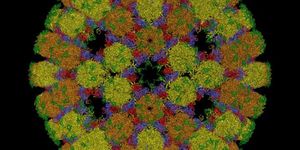How a Venus Flytrap Works
Most people think of plants as being at the bottom of the food chain, but the Venus Flytrap defies this oversimplified way of thinking by devouring meat.
While the name suggests that Venus Flytraps are fly-eaters, it turns out that flies are just a very small percentage of the plant’s overall diet. The bulk of a Venus Flytrap’s diet are ants and spiders, which have a much harder time escaping the trap in time than a winged insect like a fly.
To those wondering how a Venus Flytrap works, it goes like this: the prey lands inside the trap and triggers a response to stimuli. The response to stimuli comes by way of a series of small hair-like structures inside the trap, which indicate that something has been trapped.
These hair-like structures work in an incredible way, with the first touch signaling that something is inside and a second touch signaling that it’s time to clamp down. Venus Flytraps use this two-step process to prevent false positives and to ensure a successful capture.
When the trap closes, the tooth-like structures on the edge of the trap prevent anything inside from escaping, and just like that, anything stuck inside experiences a slow and painful death as it gets digested by the plant.








